Botanical Names
Andrographis paniculata
Common Names
| Malaysia | Hempedu bumi, hempedu tanah, akar cerita, pokok cerita. |
| English | King of bitter, creat, green chireta. |
| Indonesia | Sambiloto. |
| India | Kalmegh. |
| China | Chuan xin lian, Yi jian xi, Lan he lian. |
Family
Acanthaceae
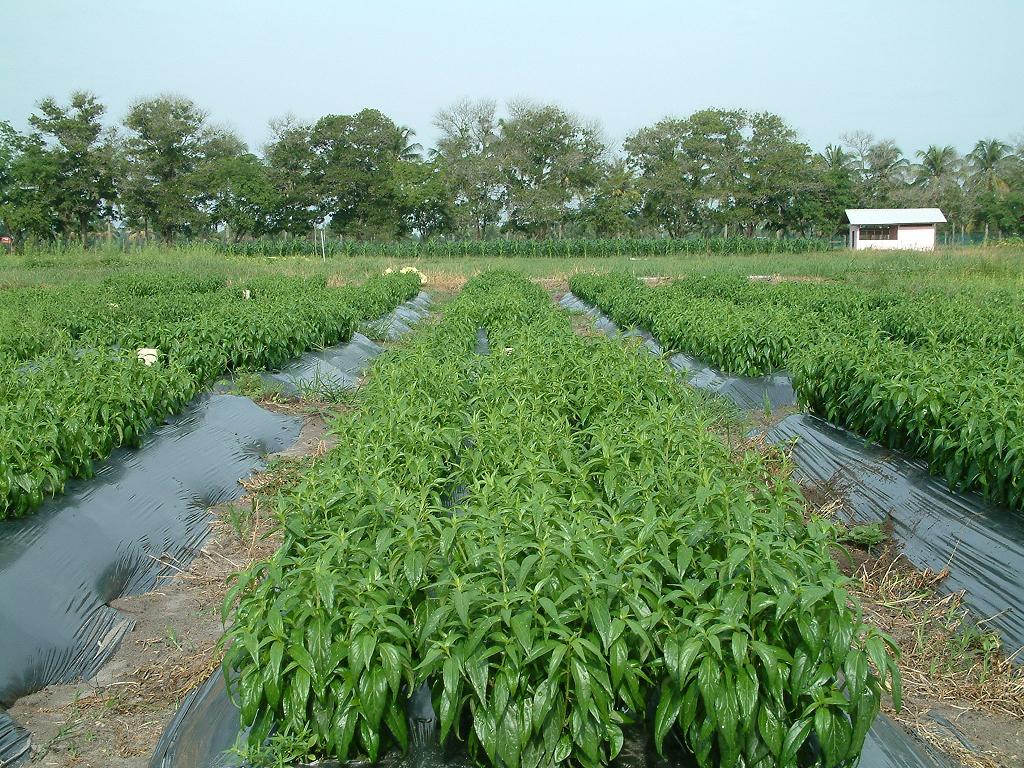
Introduction
The plant grows as undergrowth in tropical moist deciduous forests and widely found South Asian countries including Malaysia, India, Sri Langka, Bangladesh and China. It is being used traditionally by people of China, India and Malay Archipelago for medicinal purposes. It has been widely used in traditional Chinese medicine and also Ayurveda.[1][2]
Morphological Features
‘Hempedu bumi’ is an annual shrub. The stem is woody with a diametre of 0.5-1.0 cm. It has lot of branches and the height can reach up to 90 cm. The leaf is singular with a short petiole. The top leaf lamina is normally dark green and the bottom lamina is light green. This plant has small size flower of purplish white.[1][2]
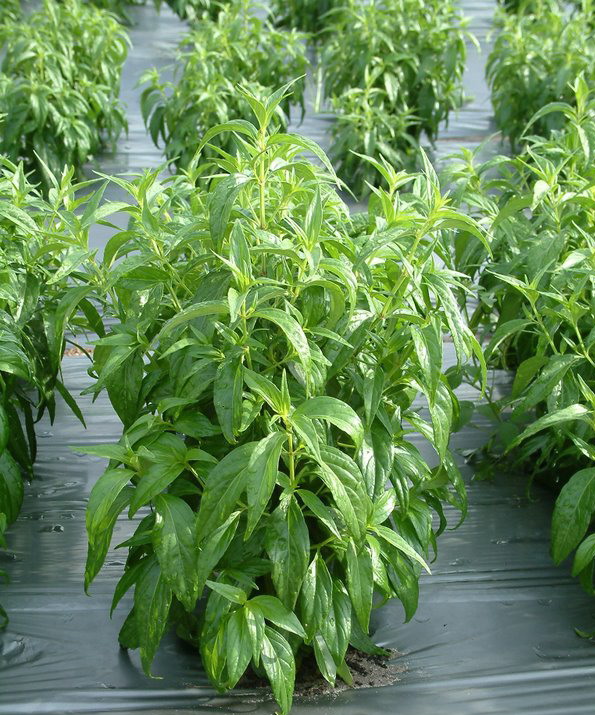
Medicinal Properties and Usage
‘Hempedu bumi’ was reported to be used as anti-inflammatory, antibacteria, antivirus, fever and expectorant. It also helps in treating constipation, induce blood clotting, cleansing and controlling sugar content in the blood. The plant was also reported to be able to increase body immunity system. This plant also has the potential to be used in commercial medicine for treating diabetes and high blood pressure.[1][2][3][4][5][6]
Soil Suitability and Climatic Requirement
This plant is suitable to be planted in moderate climatic condition, subtropical and tropical areas that receive about 1,500-2,000 mm rain per year. It can also survive in areas such as river bank, sandy soils and also hilly areas of up to 700 m above sea level.[1][2]
Field Preparation
Land Preparation
The planting area must be rotovated to improve the soil structure and to eliminate the weeds. The first rotavation is done to prepare the area for liming activity if the pH is low (acid soil). The second ploughing must be carried out after liming to ensure the lime is well incorporated into the soil to obtain the optimum effect.[1][2]
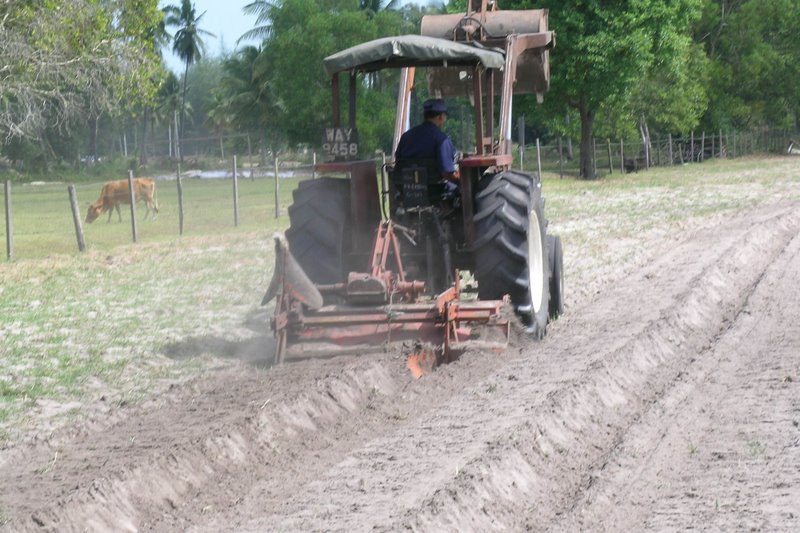
Production of Planting Materials
The seed is the best source of planting material for ‘hempedu bumi’. It is advisable not to directly sow the seed into the soil due to its small size. The seed is recommended to be sown in styrofoam trays. The germinated seedlings, at the age of 2-3 weeks after sowing, are then transferred into the seedling trays. These seedlings are raised for another 3-4 weeks in the seedling trays (styrofoam or black plastic tray) before field planting. In normal situation, the 3 or 4-week-old seedlings can attain a height of up to 6-8 cm. The use of plastic trays makes the handling of the seedlings becomes more convenient during transplanting.[1][2]
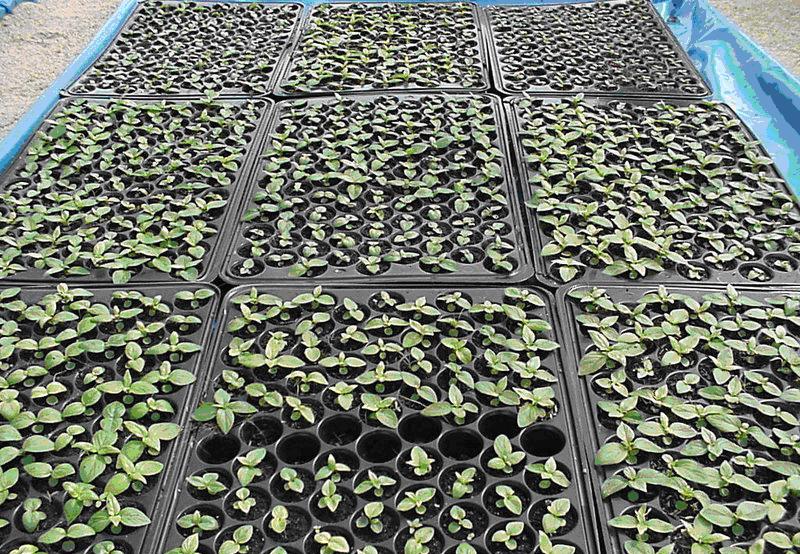
Field Planting
Two plant rows per bed at a planting distance of 30 cm x 30 cm are recommended. This will give a population of 55,555 plants/ha. The use of optimum size seedlings produces new branches 2-3 weeks after transplanting. The flower will start to appear 6-8 weeks after transplanting followed by the formation of the seed pod 10 weeks after transplanting.[1][2]
Field Maintenance
Fertilisation
For both bris and alluvial soils, chicken manure at 10 t/ha is recommended to be applied seven days before transplanting by incorporating into the soil to a depth of 15 cm from the soil surface. This is followed with the application of semi-organic fertiliser using N:P:K (10:10:10) at 500 kg/ha at transplanting for bris soil. Only 250 kg/ha of semi-organic fertiliser is adequate for alluvial soil.[1][2][7]
Weed Control
Weed problem can be solved by using plastic mulch to cover the entire surface of the bed as soon as the fertiliser is applied and the drip tape is installed. Mulching will also help to ensure the harvested plants are not contaminated with sand, soil and organic materials such as weeds.[1][2]
Water Management
‘Hempedu bumi’ requires a sufficient amount of water for good growth. Water deficit at vegetative growth stage will hinder plant development and result in severe stunting of the plant. Insufficient water supply will also reduce nutrient uptake and promote premature flowering hence reduces the biomass yield. On the other hand, excess irrigation water will increase leaching of the nutrient resulting in the loss of fertiliser into the soil especially for the bris sandy soil.[1][2]
Pest and Disease Control
Currently, there are no serious pest and disease problems on the field planting of ‘hempedu bumi’. However, some problems related to viral infections do occur at the nursery stage. The problem can be solved by practising good sanitary practices.[1]
Harvesting
‘Hempedu bumi’ can be harvested 8-10 weeks after field planting by cutting the stem at about 5 cm from the soil surface. At this growth stage, the flower buds start to develop. Harvesting at emergence of flower bud produces highest chemical content compared to early or late harvests.[1][2]
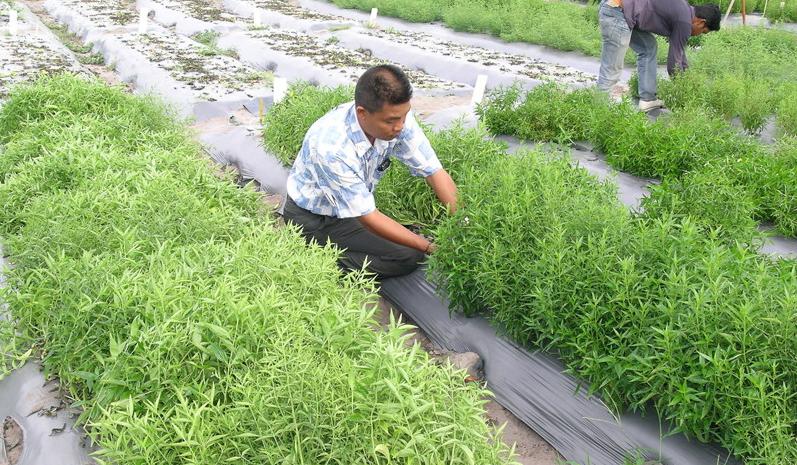
Postharvest Handling
Drying of ‘hempedu bumi’ can be done by using commercial dryer or commercial drying barn. The product must be dried to reach a moisture content of 10-12% to maintain the quality and to avoid fungus attack which is prevalent at higher moisture content.[1][2]
Estimated Cost Of Production
Total cost of producing ‘hempedu bumi’ is about RM7,700 (alluvial soil) to RM8,300 (bris soil) per hectare. At the production level of 1,000-1,500 kg/ha on bris soil, the production cost of dried ‘hempedu bumi’ is RM5.50-RM8.30/kg. For alluvial soil, at yield of 500-800 kg/ha, the production cost of dried ‘hempedu bumi’ is RM9.60-RM15.30/kg. The production cost was estimated based on the cost of current inputs during writing of this article.[1][2]
Read More
References
- Wan Zaki, W.M., Zaharah, A. and Musa, Y. (2005). Hempedu bumi (Andrographis paniculata). In: Penanaman tumbuhan ubatan & beraroma. (Musa, Y., Muhammad Ghawas, M. and Mansor, P., ed.). Pg, 36-42 .Serdang: MARDI
- Zaharah, A., Wan Zaki, W.M., Yahaya, H and Musa, Y. 2005. Manual Teknologi Penananaman Hempedu Bumi. Serdang : MARDI
- Anon. 2002. Compendium of Medicinal Plants Used in Malaysia (Vol. 1) Pg 47, Kuala Lumpur : HMRC-IMR
- Musa, Y. Azimah, K. and Zaharah, H. 2009. Tumbuhan Ubatan Popular Malaysia. Pg 45, Serdang : MARDI
- Kamarudin Mat-Salleh and Latiff, A. (editor). 2002. Tumbuhan Ubatan Malaysia. Pg. 564, Bangi : UKM
- Wiart, C. 2002. Medicinal Plants of South East Asia. Pg 270, Kuala Lumpur : Pearson Malaysia Sdn Bhd
- Zaharah, A., Sharizan, A. and Salbiah, H. (2003). Effect of organic fertiliser (Kokei) and population density on the yield and Andrographolide content of hempedu bumi (Andrographis paniculata) grown on bris and alluvial soils. Proceeding of the Malaysian Society of Soil Science Conference 2003, 15-16 April 2003. Kota Bharu, Kelantan. Kuala Lumpur: Malaysian Society of Soil Science, MARDI & UiTM.


